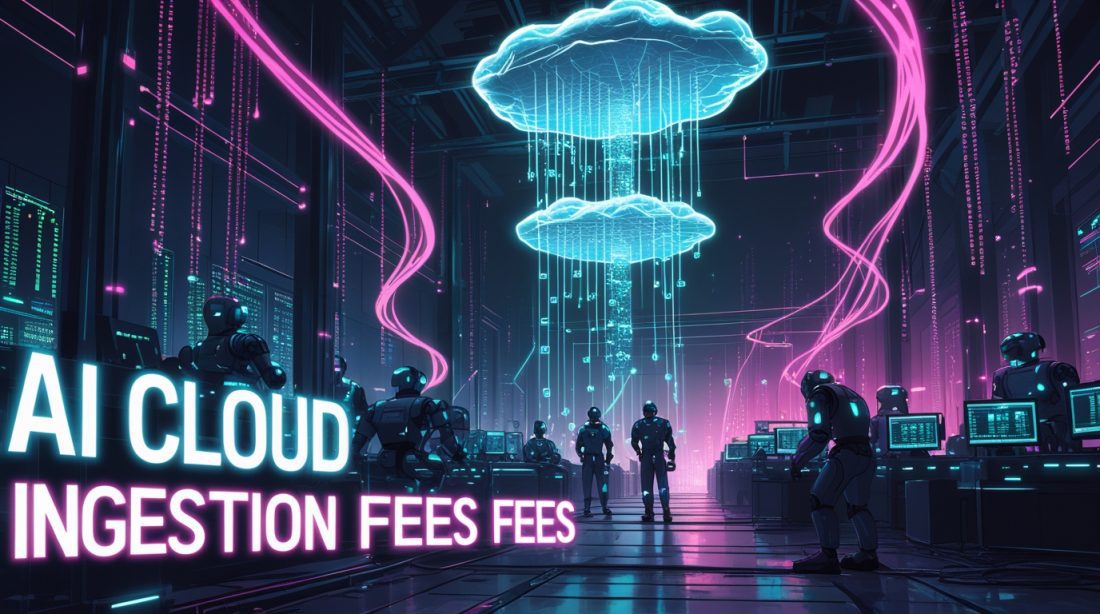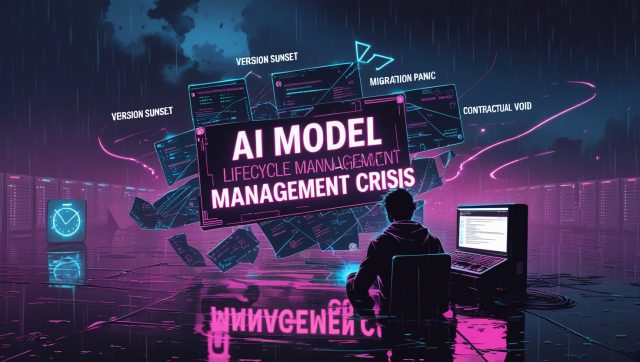AI Data Cost Fatigue: Why Small Factories Are Dropping AI Tools Over Sky-High Cloud Fees
For the manager of a mid-sized automotive parts plant, the promise of AI was a dream come true. After a successful pilot, they installed sensors across their production line for a predictive maintenance system. The AI could predict machine failures with stunning accuracy. But a few months in, a new problem emerged—not from the factory floor, but from the IT department.
A cloud bill arrived that was three times higher than projected. The cost of constantly ingesting and processing vast streams of sensor data was bleeding the project dry due to AI cloud ingestion fees. The powerful AI tool, a potential lifesaver, was now on the chopping block. This story is fiction, but the crisis is real for countless small and mid-sized manufacturers struggling with rising predictive maintenance cloud costs.
This phenomenon now has a name in boardrooms and shop floors: data cost fatigue. It’s the growing exhaustion and financial strain companies face from the relentless, unpredictable costs of feeding cloud-based AI systems. As one industry report from Gartner notes, without effective AI cloud cost management for manufacturing, even the most ambitious AI strategies risk becoming unsustainable. For factories operating on thin margins, this fatigue is forcing a painful decision: abandon innovation or face financial peril.
Why Cloud Ingestion Fees Are the Hidden Bottleneck
You wouldn’t run a furnace without knowing the cost of fuel. Yet, many factories deploy data-hungry AI without a clear picture of cloud ingestion fees for factory AI. These aren’t just simple storage fees; they are complex charges for moving, processing, and analyzing data within the cloud.
The core of the problem is the “always-on” nature of industrial AI. Sensors on a production line generate a continuous stream of data on vibration, temperature, and throughput. Sending this data to the cloud for AI analysis incurs constant fees for data transfer, compute, and API calls — known as machine learning data transfer costs. One analysis found that industrial AI cloud billing for workloads can start at around $2,000 per month and scale rapidly. What starts as a manageable trickle can quickly become a flood of AI data storage costs for manufacturers that drowns the project’s ROI. Understanding how to manage these streams is crucial, much like the strategies needed for effective industrial IIoT data latency and real-time visibility.
Why Cost Tracking Fails for Factory AI Projects
A staggering 57% of organizations still rely on manual methods like spreadsheets to track their AI cloud cost optimization efforts, while 15% have no formal system at all. This lack of visibility is a critical failure point for FinOps for manufacturing AI.
In a factory setting, it’s hard to isolate which process or machine drives which cloud costs. Is the spike coming from vibration data or the thermal imaging from welding robots? Without granular attribution, factory managers are left with AI project budget overruns in manufacturing and no clear culprit. This lack of insight directly fuels small factory AI cost fatigue and leads to shutdowns of otherwise valuable AI initiatives. This is a classic example of the broader challenges that can arise, similar to the issues of stakeholder fear killing AI retraining budgets mid-cycle.
Why AI Cost Predictability Is a Myth in Manufacturing
Manufacturing depends on predictable costs — but AI cloud pricing models are anything but.
Unpredictable Workloads
Unlike websites with consistent traffic, factories experience event-driven data spikes. When a machine nears failure, it might send a torrent of data, triggering real-time sensor data cloud fees that skyrocket unpredictably. This makes budgeting or calculating total cost of ownership for factory AI a constant challenge.
The Specialized Hardware Trap
AI workloads often rely on GPUs that can be over 15x more expensive than standard compute. Combined with vendor lock-in, this leads to spiraling expenses and limited flexibility. Factories end up wondering, “Why is my factory AI so expensive?”
Avoiding AI vendor lock-in in manufacturing and embracing flexible infrastructure is essential to keeping industrial AI cloud costs under control. Exploring different architectural approaches, such as those enabled by edge AI for industrial optimization, can provide a path out of this trap.
Why Small Factories Feel the Pain More Acutely
Large enterprises have entire FinOps teams, but small factories often don’t. For manufacturers with under 500 employees, AI ROI calculation and AI cost management are often afterthoughts.
Surveys show that smaller plants spend more time managing AI data costs for manufacturers than launching new models. A single billing spike can derail a quarterly budget, especially when cloud billing alerts for factory AI aren’t properly set up.
The evidence is clear: only 51% of organizations can confidently evaluate manufacturing AI implementation costs or ROI. For small factories, that uncertainty makes AI adoption feel risky and overwhelming.
How to Fight Back Against Data Cost Fatigue
Abandoning AI isn’t the solution. Instead, factories need to take control of their AI cloud cost management for manufacturing through visibility and smart architecture choices.
1. Demand Granular Cost Visibility
Move beyond spreadsheets and embrace tools that reveal cloud cost optimization for small factories. Understanding the impact of data volume on AI costs can help teams identify cost drivers and apply best practices for industrial AI cost control.
2. Conduct a Data Diet
Not all data is equally valuable. Limit unnecessary high-frequency data streams to reduce AI data ingestion fees and avoid data cost fatigue in industrial AI systems. A smarter data ingestion strategy lowers recurring costs of industrial IoT data processing.
3. Explore Edge Computing
Adopting edge computing for AI cost reduction allows processing data locally before it hits the cloud. This not only reduces real-time sensor data cloud fees but also improves performance. For a deeper look at this strategic shift, the Linux Foundation’s EdgeX Foundry is a key resource for open-source frameworks.
4. Compare Cloud Providers and Pricing Models
Before scaling, compare cloud costs for AI models across platforms. Different providers have varying AI cloud pricing models, and switching may help lower AI cloud spend and avoid vendor lock-in.
5. Implement Proactive Cost Alerts
Use modern monitoring tools to set cloud billing alerts for factory AI, ensuring teams are warned before a budget overrun happens. This step is key in strategies to lower AI cloud spend and maintaining long-term sustainability.
TL;DR:
Small factories are facing data cost fatigue in industrial AI due to unpredictable AI cloud ingestion fees and rising costs of industrial IoT data processing. Lack of visibility, vendor lock-in, and poor cost attribution lead to unsustainable bills. Solutions include edge computing, granular cost tracking, and FinOps strategies for manufacturing AI. By understanding the true cost of AI-powered quality control and improving transparency, small manufacturers can finally control their cloud spend — and make factory AI affordable again.

